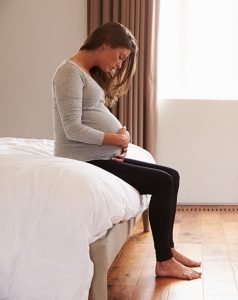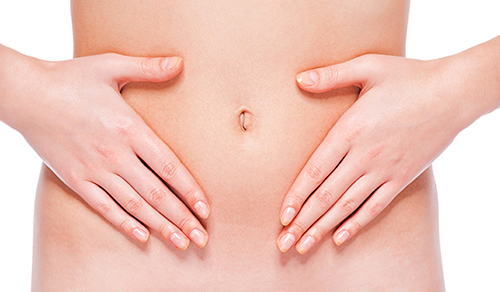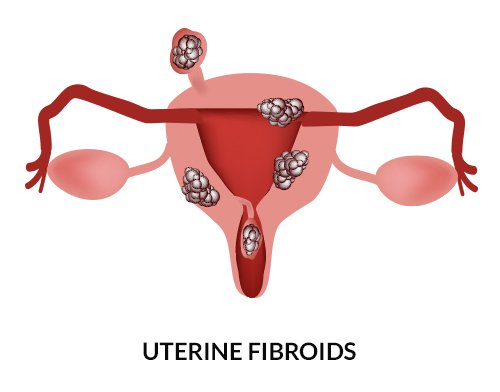Uterine fibroids refer to growths in the uterus that typically develop during the childbearing years of a woman. These growths are noncancerous in nature, but can result in a substantial amount of pain as well as other negative side effects for a woman. Since uterine fibroids develop in the uterus, it should be fairly easy to predict that uterine fibroids can have an impact on a pregnancy. While it is known that fibroids have an impact on pregnancy, the exact nature and specifics of this impact is largely unknown and differs from woman to woman.
If you have fibroids, you may worry about the possible effects it could have on your pregnancy. Here is some information about what you can expect to experience when you are pregnant if you have uterine fibroids.
Can fibroids cause infertility?

The main factor that can serve as a predictor of the impact on fertility is the location of the fibroids. If the uterine fibroids are located in certain areas of the uterine cavity, they can actually distort the shape and size of the uterus. This is especially true if the uterine fibroids grow to become incredibly large in size. While fibroids in the wall of the uterus can also have an impact on fertility, this effect is usually far less severe in nature.
Women who believe that they may have uterine fibroids should see a doctor sooner rather than later, especially if they hope to conceive soon or in the future. Those who have a family history of fibroids should definitely see a doctor on a regular basis to check for fibroids.
Unfortunately, fibroids can grow at a fairly rapid rate. Therefore, it is a good idea to have these tumors dealt with before they possibly interfere with your fertility. In some cases, we reccommend that women with fibroids simply conceive as early as possible just in case their fertility changes in the future. While fibroids don’t always have an impact on fertility, it is far better to be safe than sorry.
How do fibroids hurt the ability to have a baby?
Let’s start with the positive part. Many women will have fibroids that won’t hurt their chances of having children. The fibroids may stay small, or occur in areas that don’t affect the reproductive system. But certain fibroids will have a profound effect on the ability to conceive, stay pregnant and carry a baby to term.
Depending on where they are located, fibroids may prevent sperm and egg from meeting for conception. Fibroids can hamper the ability of an embryo to implant. They often grow in places or to sizes that make it challenging for a pregnancy to continue. Fibroids may even affect the health and welfare of the fetus.
How do fibroids hurt the ability to have a baby? The answer has a lot to do with where in the uterus the fibroids are located.
Fibroids can reduce your fertility in these ways:
- Fibroids that change the shape of your cervix can affect the number of sperm able to enter the uterus.
- Uterine fibroids that block the Fallopian tubes can make the journey of a fertilized egg to implantation difficult or impossible.
- Fibroids which change the shape of your uterus may decrease the number of places an embryo can successfully implant or reduce uterine space needed for embryo development.
- Fibroids that weaken the lining of the uterine cavity or decrease the blood supply to a growing embryo can cause miscarriage.
You have fibroids. You want children. Now what?
If you are already pregnant, you want to be sure any fibroids present are monitored by your OB/GYN or fibroid surgeon. Sometimes, as the baby grows, so will the fibroids. This can create issues for pregnancy and delivery. It’s important that your pre-natal care includes a sharp medical eye on existing fibroids and their development.
If you have fibroids and are trying to get pregnant, it’s important to discuss with your doctor whether the fibroids are in places that might prevent you from doing so, or are in places that could cause complications in pregnancy. That being said, fibroid treatment is usually recommended.
If my best chance for a successful pregnancy is fibroid treatment, what are the options?
Removing fibroids to improve the chance for conception and pregnancy may be recommended to you. Often, a doctor will suggest a surgery called ‘myomectomy’. Myomectomy cuts out existing fibroids. While this form of fibroid removal is fairly common, it has several drawbacks.
- Surgery to the uterus may cause scarring. Uterine scarring can make the successful implantation of an embryo problematic.
- If any part, even a few cells, of a fibroid are left behind, that fibroid will have a 50% chance of regrowth within a period of about 10 months. This makes your window of opportunity for conception and pregnancy very limited.
- If you have a myomectomy and don’t get pregnant fairly quickly, you could wind up facing multiple surgeries as fibroids repeatedly grow back.
- Surgery to the uterine walls can also weaken them. Sometimes, this compromises carrying a baby to term and/or it’s delivery.
Is there a non-surgical approach that ends fibroids and aids my fertility?
Yes. It’s called Uterine Fibroid Embolization. Embolization shrinks fibroids instead of cutting them out. It is a minimally invasive, non-surgical procedure. It works by blocking the blood supply to each fibroid, ending its ability to thrive and grow. Embolization doesn’t involve cutting or cause any scarring. And embolization is extremely precise. It addresses only fibroids, leaving all other tissue healthy and whole. As the fibroids shrink, so do the fertility problems they create.
Can I Get Pregnant with Fibroids?
The effect that uterine fibroids have on fertility varies from woman to woman. Based on various studies, it is estimated that about 5 to 10 percent of all infertile women have at least one fibroid. However, this does not necessarily mean that the fibroids caused these women to be infertile. In general, the effect uterine fibroids have on fertility depends mostly on size and location. For example, fibroids that occur within the uterine cavity are more likely to result in infertility than fibroids that arise in other areas of the uterus. Also, fibroids in the wall of the uterus that are larger than six centimeters in diameter are also likely to cause infertility. Fortunately, large fibroids and growths that occur in the uterine cavity are uncommon. The vast majority of women will not become infertile due to fibroids. If you suspect that fibroids are impacting your fertility, you and your partner should be thoroughly evaluated to ensure that other issues aren’t the cause of infertility.
What risk do fibroids pose to health of me and my baby?
Another question that many women with fibroids ask is whether the uterine fibroids will pose a risk to the health of themselves or the well-being of their baby. Fortunately, most women with fibroids are able to have a fairly normal pregnancy with vaginal delivery. However, fibroids are known to cause complications in some cases. In general, the likelihood that fibroids will cause complications depends on the size of the fibroid and the location of the fibroid.
Without a doubt, location is the most important factor, even more important than size. For example, a woman may have an incredibly large fibroid at the top of the uterus. Due to the location of the fibroid, it may not impact the pregnancy at all, despite the fibroid’s incredibly large size. Therefore, women should not automatically assume that fibroids, even large fibroids, will surely impact their ability to have a healthy pregnancy. Not all women experience difficulty with pregnancy due to fibroids.
Sometimes, fibroids can raise the risk of a miscarriage in the first or second trimester. This is especially true of fibroids located in the uterine cavity rather than the uterine wall. There are a few studies that suggest fibroids may raise the risk of stillbirths, abnormal fetal position, preterm labor and delivery, and abruption of the placenta. However, there are just as many studies that suggest this is not the case.
In general, the most serious complication that fibroids can cause with a pregnancy is when the placenta grows near the surface of a uterine fibroid. If this occurs, the presence of the uterine fibroid may cause the baby to be deprived of essential nutrients, so the baby might be born at a lower birth weight than normal. In more severe cases, the presence of the uterine fibroid may cause the amniotic sac to rupture too early. Fibroids are also known to be able to block the birth canal, which can complicate both the process of labor and delivery.
Overall, women should realize that it is unlikely that their fibroids will negatively affect their baby in any way. Cases in which a baby is harmed or deformed due to fibroids are incredibly rare. For the vast majority of pregnant moms, fibroids are an annoyance.
What are the symptoms of fibroids in pregnant women?
In many cases, women only find out that they have fibroids in their uterus when they go for their first ultrasound to monitor the development of the baby because fibroids often cause no symptoms. However, in some cases, women will start to experience symptoms of fibroids during and after their pregnancy. The most common symptoms in expecting mothers include pain, fever, nausea, and sometimes an increase in the level of white blood cells in the blood. Pain medication is usually recommended for women to help them cope with pain and discomfort. While fibroids can be removed in a number of ways, a woman cannot have her fibroids removed once she is pregnant. During pregnancy, the uterus is far more prone to bleeding. Therefore, the fibroids can’t be removed from the womb. If a pregnant woman wants to have her fibroids removed from her uterus, she will have to wait until after she delivers the baby. That way, the risk of excessive bleeding or other complications is far lower.
Will fibroids cause pain during the pregnancy?
For some women, their uterine fibroids flare up during pregnancy. Pain is a very common symptom for these pregnant women. Those who experience pain from fibroids during their pregnancy should rest, use heating pads, or use a prescription or pain medication that is safe for use by pregnant women.
If the fibroids of a woman grow exceptionally fast during a pregnancy, this can result in red degeneration. Some of the symptoms of red degeneration include severe pain, vomiting, vaginal bleeding, nausea, and even fever. A woman will feel this pain over the entire area where the fibroid is located. This pain may radiate down the entire back of the woman. While this pain typically appears during the second trimester, it can appear at any time during the pregnancy.
If the pain from the red degeneration is incredibly severe, it might cause the uterus to begin to contract, inducing preterm labor. Women who experience this will likely be hospitalized or asked to rest in bed to wait for the signs of preterm labor to disappear.
Fibroids Pregnancy & Fertility
Many women have concerns about the possible effects of their fibroids on their pregnancy. If you still have any concerns about what to expect when you’re pregnant if you have fibroids, don’t hesitate to contact us for more information.


 A
A 


 Intramural uterine fibroids are the most common, and grow within the muscular wall of the uterus. They can cause symptoms such as pelvic pain, pack pain or pressure, and heavy menstrual bleeding.
Intramural uterine fibroids are the most common, and grow within the muscular wall of the uterus. They can cause symptoms such as pelvic pain, pack pain or pressure, and heavy menstrual bleeding. Heavy bleeding for longer durations
Heavy bleeding for longer durations Back and Leg Pain
Back and Leg Pain

